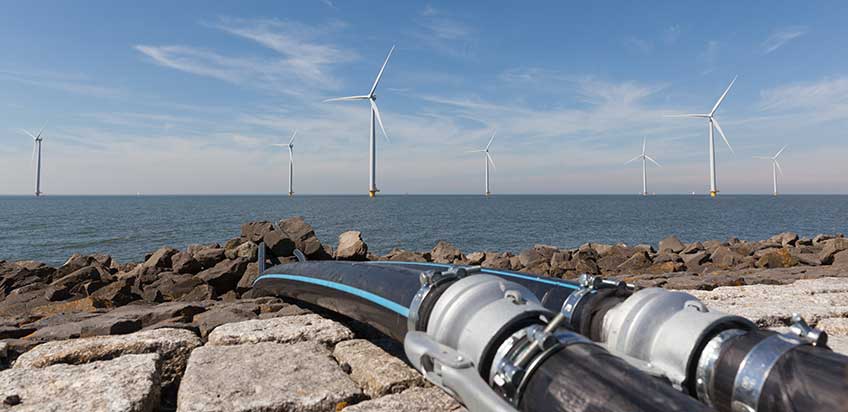albisteak
Designing an AC-DC Converter Circuit: A Step-by-Step Guide
Egilea: ZYG Power Module Time: 2023-5-8
Introduction
An AC-DC converter circuit is an electrical circuit that is used to convert alternating current (AC) to direct current (DC) voltage. This converter circuit is commonly used in electronic devices such as computers, televisions, and audio equipment. The AC-DC converter circuit design can be complex, and it requires a good understanding of electronic circuits, components, and their properties. In this article, we will provide a step-by-step guide to designing an AC-DC converter circuit.
Step 1: Determine the Required Voltage and Current

The first step in designing an AC-DC converter circuit is to determine the required voltage and current for your application. This will depend on the electronic device that you are designing the circuit for. For example, a computer power supply requires a voltage of 12V DC and a current of 5A.
Step 2: Choose the Rectifier Circuit
The next step is to choose the rectifier circuit that will be used to convert the AC voltage to DC voltage. The rectifier circuit is made up of diodes that allow current to flow in one direction only. There are two types of rectifier circuits: half-wave and full-wave. The half-wave rectifier circuit is simpler, but it provides a lower DC output voltage. The full-wave rectifier circuit provides a higher DC output voltage and is more efficient.
Step 3: Select the Capacitor
The capacitor is used to smooth out the DC voltage after it has been rectified. The capacitor should be chosen based on the required voltage and current of the circuit. A larger capacitor will provide a smoother DC voltage but will also be more expensive.

Step 4: Choose the Transformer
The transformer is used to step down the AC voltage to a lower voltage that can be rectified. The transformer should be chosen based on the required voltage and current of the circuit. The transformer should also be rated for the required power output.
Step 5: Choose the Voltage Regulator
The voltage regulator is used to regulate the DC voltage to a constant voltage. There are two types of voltage regulators: linear and switching. Linear regulators are simpler but less efficient, while switching regulators are more complex but more efficient.
Step 6: Design the Circuit
Once you have chosen all the components, you can start designing the circuit. The circuit should be designed to meet the required voltage and current specifications. The circuit should also be designed to be safe and reliable.
Step 7: Build and Test the Circuit
After designing the circuit, you should build the circuit and test it to ensure that it meets the required specifications. You should also test the circuit for safety and reliability.
Conclusion
Designing an AC-DC converter circuit can be a complex process, but it is essential for many electronic devices. By following the steps outlined in this article, you can design an AC-DC converter circuit that meets the required voltage and current specifications. Remember to choose the components carefully and test the circuit for safety and reliability.
Aurrekoa: AC-DC Converter Module: A Power Conversion Solution
Hurrengoa: Designing an Efficient Industrial AC-DC Converter
informazio garrantzitsua
-
2024-10-22
AC and DC power supplies: What’s the difference?
In modern power systems and electronic devices, AC and DC power supplies are the two most common types of power supplies. They each have unique characteristics and application scenarios, and are of great importance to our lives and industrial production. So what are the differences between AC and DC power supplies? First of all, by definition, an AC power supply refers to a power supply whose direction and magnitude change over time. In an AC power supply, the direction of the current changes periodically, meaning the positive and negative charges move alternately. Because of this periodic change, the voltage and current of an AC power supply are usually represented by a sine wave, and the frequency is usually 50Hz or...
Ikusi xehetasunak -
2023-6-2
China AC DC Converter SPM Series manufacture
The AC DC Converter SPM Series is a power supply device that is able to convert alternating current (AC) into direct current (DC). This series of converters is produced by one of the leading companies in the field of power electronics, Mitsubishi Electric. The AC DC Converter SPM Series is designed to meet the demands of various industrial applications. Its wide input voltage range (85V to 264V) allows it to be used in a variety of settings, while its compact size and high efficiency make it an ideal choice for space-constrained installations. One of the key features of the SPM Series is its high reliability. This is achieved through the use of advanced technology, such as a built-in power factor...
Ikusi xehetasunak -
2023-7-12
12V AC to DC Converter Module: Efficiently Power Your Devices with this Conversion Solution
Introduction: In today's technologically advanced world, the need for efficient power supply solutions has become more crucial than ever. Many electronic devices and appliances require direct current (DC) power to function properly, while the power supply available in most households is alternating current (AC). To bridge this gap, a 12V AC to DC converter module has emerged as an effective and reliable solution. This module efficiently converts the AC power supply into DC, enabling devices to operate seamlessly. In this article, we will explore the working principle, features, applications, and benefits of the 12V AC to DC converter module. Working Principle: The 12V AC to DC converter module is based on the principle of rectification. It consists of multiple components,...
Ikusi xehetasunak -
2023-7-6
Introducing the SPM Series: An AC DC Converter for All Your Power Conversion Needs
In today's fast-paced world, reliable and efficient power conversion is a crucial factor in ensuring the smooth operation of various electrical devices and systems. Whether it's for industrial applications, telecommunications, or renewable energy sources, having a high-quality AC DC converter is essential. That's where the SPM Series comes in. The SPM Series is a cutting-edge AC DC converter designed to meet all your power conversion needs. With its advanced technology and robust features, this converter stands out from the competition, providing unparalleled performance and reliability. One of the key features of the SPM Series is its versatility. This converter is capable of converting both alternating current (AC) and direct current (DC) power sources, making it suitable for a wide range...
Ikusi xehetasunak -
2023-3-31
Kalitate Kontrolaren garrantzia Txinako DC-DC bihurgailuen fabrikazioan
Kalitate kontrola funtsezkoa da fabrikazioaren alderdi guztietan, batez ere Txinako DC-DC bihurgailuen fabrikazioan. DC-DC bihurgailuak tentsio maila bat beste batera bihurtzen dituzten gailuak dira eta hainbat industriatan erabiltzen dira, besteak beste, automobilgintza, aeroespaziala, medikuntza eta elektronika. Kalitate-kontrolak DC-DC bihurgailuek eskatutako zehaztapenak, errendimendu-arauak eta segurtasun-arauak betetzen dituztela ziurtatzen du. Artikulu honetan, Txinako DC-DC bihurgailuen fabrikazioan kalitate-kontrolaren garrantziaz hitz egingo dugu. DC-DC bihurgailuaren oinarriak DC-DC bihurgailuak tentsio maila bat beste batera bihurtzen dituzten gailuak dira. Hainbat osagaiz osatuta daude, besteak beste, induktoreak, kondentsadoreak, diodoak eta transformadoreak. Bihurgailuak pultsu zabalerako modulazioa erabiliz funtzionatzen du irteerako tentsioa sarrerako seinalearen arabera erregulatzeko. Bihurgailu hauek sartzen dira...
Ikusi xehetasunak -
2023-6-6
Industrial AC-DC Converter: Efficient and Reliable Power Conversion Solution
In industrial applications, the conversion of alternating current (AC) to direct current (DC) is a critical process. The AC-DC converter is responsible for converting the AC power supply from the grid into stable DC current that can power industrial equipment and machinery. The AC-DC converter is an essential component in many industrial applications, including automation, renewable energy, transportation, and telecommunications. The efficiency and reliability of the AC-DC converter are crucial for ensuring optimal performance and productivity in these applications. Efficiency is a key factor in the design of AC-DC converters. The efficiency of a converter is the ratio of the output power to the input power, expressed as a percentage. A high-efficiency converter can significantly reduce power losses, which translates...
Ikusi xehetasunak


















